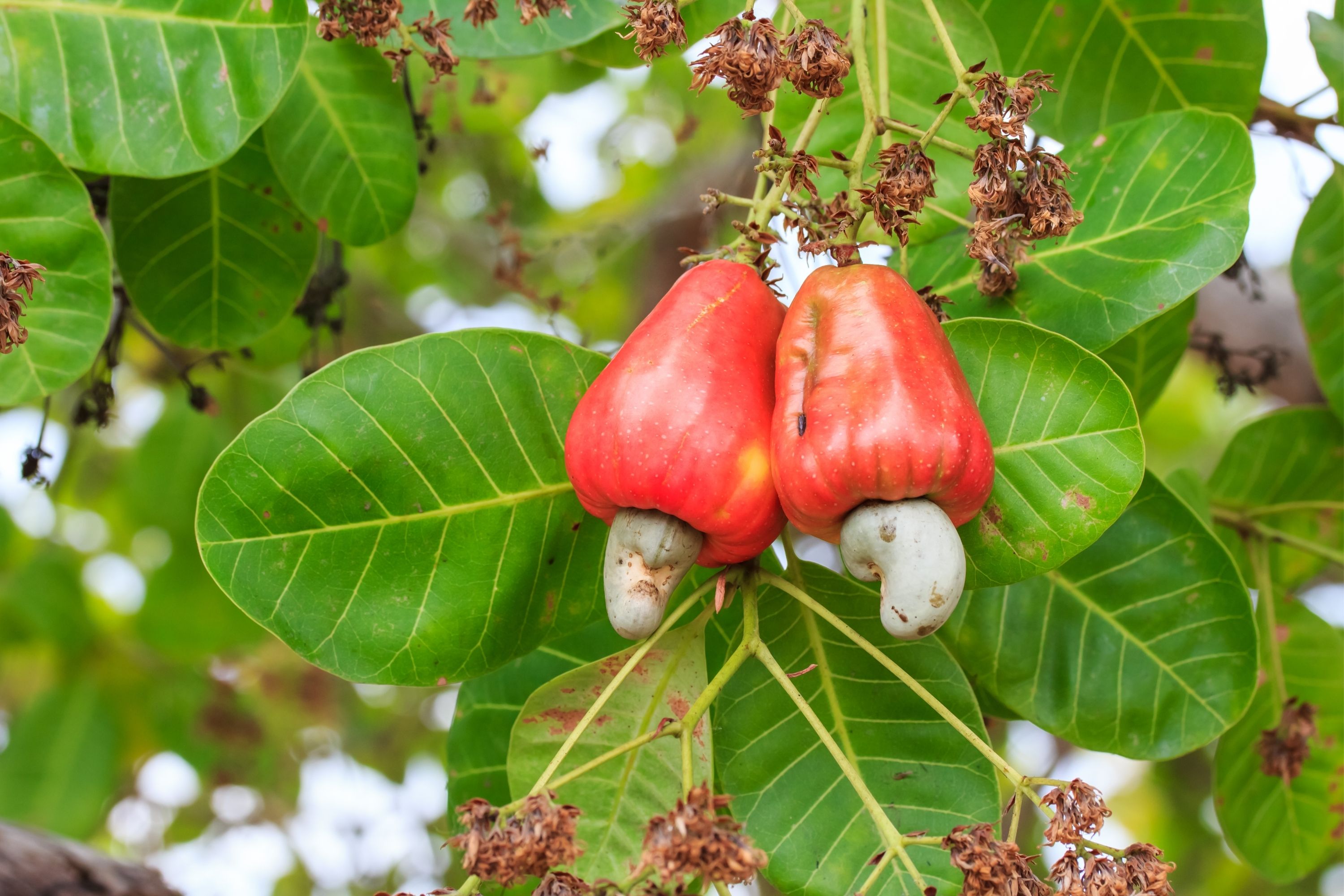Cashew tree
(Anacardium occidentale)

Description
The cashew tree (Anacardium occidentale) is a tropical evergreen tree that produces the cashew seed and the cashew apple accessory fruit. The tree can grow as high as 14 m (46 ft), but the dwarf cultivars, growing up to 6 m (20 ft), prove more profitable, with earlier maturity and greater yields. The cashew seed is commonly considered a snack nut (cashew nut) eaten on its own, used in recipes, or processed into cashew cheese or cashew butter. Like the tree, the nut is often simply called cashew. Cashew allergies are triggered by the proteins found in tree nuts, and cooking often does not remove or change these proteins. In 2019, four million tonnes of cashew nuts were produced globally, with Ivory Coast and India as the leading producers. As well as the nut and fruit, the plant has several other uses. The shell of the cashew seed yields derivatives that can be used in many applications including lubricants, waterproofing, paints, and, starting in World War II, arms production. The cashew apple is a light reddish to yellow fruit, whose pulp and juice can be processed into a sweet, astringent fruit drink or fermented and distilled into liquor. The species is native to Northeastern Brazil and Southeastern Venezuela, and later was distributed around the world in the 1500s by Portuguese explorers. Portuguese colonists in Brazil began exporting cashew nuts as early as the 1550s. The Portuguese took it to Goa, India between 1560 and 1565. From there, it spread throughout Southeast Asia, and eventually Africa. The cashew tree is large and evergreen, growing to 14 m (46 ft) tall, with a short, often irregularly shaped trunk. The leaves are spirally arranged, leathery textured, elliptic to obovate, 4–22 cm (1.6–8.7 in) long and 2–15 cm (0.79–5.91 in) broad, with smooth margins. The flowers are produced in a panicle or corymb up to 26 cm (10 in) long; each flower is small, pale green at first, then turning reddish, with five slender, acute petals 7–15 mm (0.28–0.59 in) long. The largest cashew tree in the world covers an area around 7,500 m2 (81,000 sq ft) and is located in Natal, Brazil. The fruit of the cashew tree is an accessory fruit (sometimes called a pseudocarp or false fruit).
Taxonomic tree:







